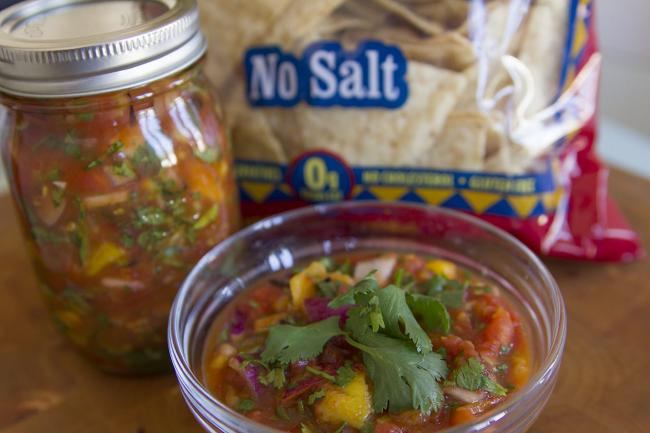You Are What You Eat: Take with a grain of salt: my favorite sources for low-sodium information
No salt included.
Mon, 12/07/2015
By Katy Wilkens, MS, RD
I have many online sources for good information when it comes to salt – or rather, doing without salt, which is much healthier because too much will strain your heart and kidneys. My favorites cover a range of perspectives: from recipe tips for people trying to cut down on sodium to geeky articles on the science of salt to international viewpoints.
Check out some of my favorite resources below. This list is by no means inclusive.
Sodium Girl: www.sodiumgirl.com Jessica Goldman Foung shares cooking tips and recipes from her low-sodium life as she faces kidney disease. She’s an inspirational writer with savvy food skills. Try her recipe for homemade low-sodium bacon. You’ll never go back to the salty kind. Check out her low-sodium cookbook too.
USDA National Nutrient Database: ndb.nal.usda.gov. Here you can find thousands of foods and beverages listed with their nutritional content, including sodium. This is where I go when someone asks me how much sodium there is in a slice of bread, oatmeal or cheddar cheese. It’s free and simple to use, but it does not include all pre-packaged foods.
Northwest Kidney Centers: www.nwkidney.org. Nearly 300 low-sodium recipes for people with healthy kidneys as well as people with chronic kidney disease.
Salt in the News from the Centers for Disease Control and Prevention. To be added to this newsletter mail list, contact Jessica Levings at JLevings@cdc.gov. This biweekly publication captures news related to sodium and sodium reduction. It includes industry advances; government regulations; local, national and international news; studies and research, and more. The purpose is to provide a snapshot of sodium-related topics in the media, so the articles are often interpreted for the non-medical person.
World Action on Salt and Health (WASH): www.worldactiononsalt.com Information on salt consumption, tips on avoiding salt and technical articles. WASH has representatives from 95 countries. Find articles comparing the salt in fast foods around the world, a study of the high amount of salt in kids’ lunches around the world, and salt intake by ethnic group, to name a few. Be aware: this site discusses salt intake, not sodium, so reference ranges and suggestions may seem high compared to U.S. recommendations, which are based on sodium intake, not salt intake. Since salt is only 40 percent sodium, the WASH recommendations can seem high. I just divide them in half mentally.
Healthy Heart Market: www.healthyheartmarket.com. A great website to shop for 500 low-sodium products, such as low-sodium baking powder and low-sodium pickles. Be aware: if you have to limit your potassium because of impaired kidney function, some of their foods contain potassium chloride (a salt substitute) and therefore may not be a good choice for you – check with your doctor or a dietitian.
The information in this column is meant for people who want to keep their kidneys healthy and blood pressure down by following a low-sodium diet. In most cases, except for dialysis patients, a diet high in potassium is thought to help lower high blood pressure. These recipes are not intended for people on dialysis without the supervision of a registered dietitian.
[Katy G. Wilkens is a registered dietitian and department head at Northwest Kidney Centers. The 2014 recipient of National Kidney Foundation Council on Renal Nutrition’s Susan Knapp Excellence in Education Award, she has a Master of Science degree in nutritional sciences from the University of Washington. See more of her recipes at www.nwkidney.org.]


